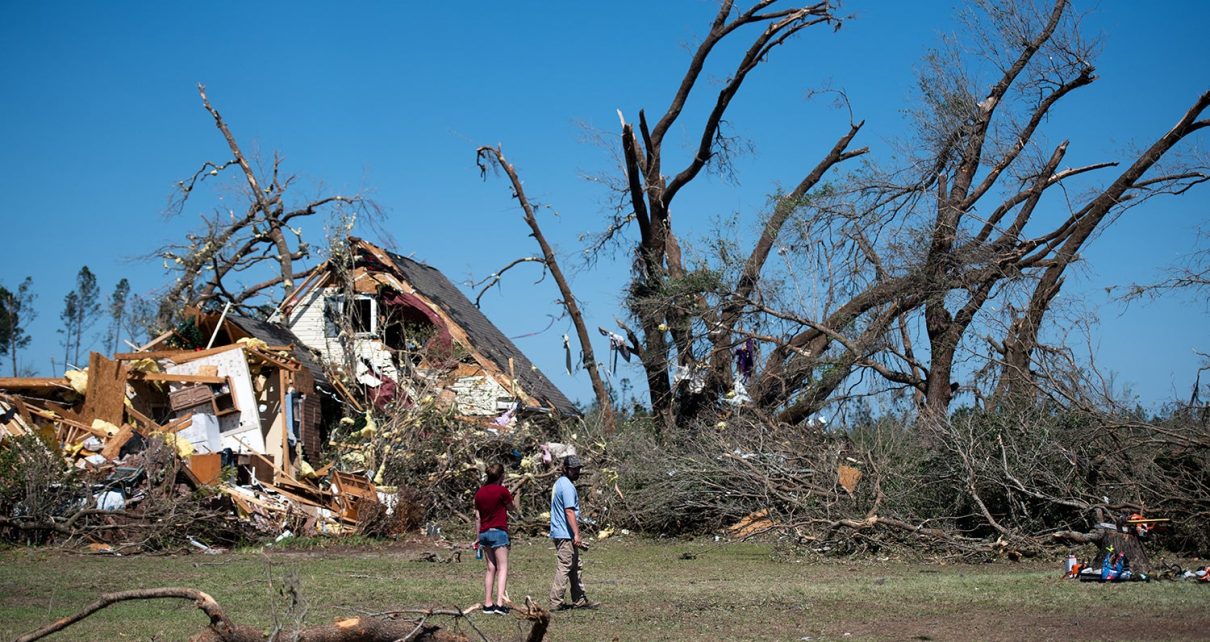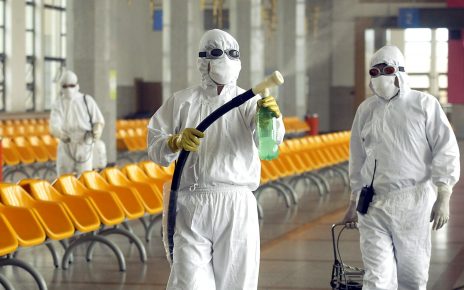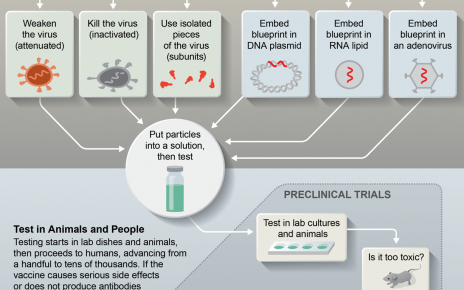The routines of tornado season are familiar ones across the Southeast: Residents keep weather radios close by, schools run tornado drills, and towns test sirens. But the deadly storms that swept through the region over Easter Sunday came amid a pandemic that has touched virtually every corner of the U.S., complicating disaster preparation and response. To maintain social distancing, officials in some locations decided against opening community shelters at all, while those in Louisiana’s Ouachita Parish, where several hundred homes were damaged, worked to house displaced people in hotels instead of shelters.
Across the country, emergency managers already stretched thin by the unprecedented health crisis are making on-the-fly decisions about how to respond to other disasters—from flooding to hurricanes—in a way that minimizes the risk of further spreading the novel coronavirus. There is no playbook for them to follow. Though emergency management experts have studied and planned for how to contend with multiple disasters at once, the idea of one overlapping with a major disease outbreak—particularly on the scale of the current pandemic—is something that has only come up in passing discussion. “We haven’t really done a deep dive to think about, well, ‘What does this mean, in reality, if this happens?’” says Tricia Wachtendorf, director of the Disaster Research Center at the University of Delaware.
Changes to disaster protocols in the coming months will depend on the particular hazards, but the key theme is one of reduced capacity. Experts are concerned about every stage of emergency management, spanning from from preparation to recovery and including key issues such as evacuations, public messaging and the mutual aid agreements between states that allow them to share resources. The recent tornadoes will not be the last time the nation’s disaster response is tested during the pandemic: spring flooding is expected along the Mississippi River, hurricane season is just weeks away, and California wildfires are an ever present risk. “There will be other disasters that happen in the next several months. There always are. And to add that on top of COVID, it just complicates everything,” says Samantha Montano, an emergency management researcher at the University of Nebraska Omaha.
A “Unique Situation”
Normally Erin Hughey and her colleagues at the Pacific Disaster Center (PDC) in Hawaii spend the spring preparing for the June 1 start of hurricane season. But like other emergency management professionals around the U.S., they have had to shift gears to respond to the pandemic. “What we are doing is taking those same resources that would typically prepare for hurricane season or flood season or tornado season and working at max capacity just to respond, and manage the logistics in response, to COVID,” she says. The need for social distancing has also curtailed some of the usual preparation activities, such as training wildfire fighters and providing public outreach to hurricane-prone areas. Last month the mayors of several towns along the Mississippi River that are expecting flooding began to talk to federal and state officials about how to respond to both events simultaneously. “This is a very unique situation. [And] emergency managers are having detailed discussions about it right now,” says Hughey, who is director of global operations at the PDC, an applied research center managed by the University of Hawaii.
One decision managers in communities threatened by hurricanes and wildfires may face is whether, and how, to change their evacuation and sheltering procedures. To prevent the spread of the virus, beds in shelters have to be more spaced out, potentially requiring a greater amount of space than usual. Operators may need to provide not only food but gear such as masks and gloves at a time when supply chains are already strained. And officials do not know how the pandemic may change the number of people seeking to use the shelters. With so many people unemployed because of the economic shutdown, Hughey says, there may be fewer of them with the means to evacuate to a hotel, away from danger (and fewer hotels may be open). Evacuees may also be less likely to stay with family and friends because doing so could put loved ones at risk of exposure to COVID-19. Both factors could mean more people will head to shelters. But it is also possible that individuals will avoid crowded shelters, Montano says. That uncertainty makes it difficult for officials to know how much shelter space to plan for.
If officials do change disaster protocols—particularly ones that may be well ingrained in a community—they could pose a public-messaging headache. Those changes should be made as soon, and as clearly, as possible, according to Wachtendorf. “In the middle of that disaster is not the time for new information,” she says. Consistency between different agencies and even different jurisdictions will also be key, Wachtendorf adds. Because the pandemic response and directives have varied so much from city to city and state to state, “what worries me most is the extent the public trusts the information that it’s receiving,” she says. Without that trust, people may not listen, which could exacerbate the toll of any disaster.
Response and Reform
The response in the immediate aftermath of a disaster will also likely look different. So much of that initial reaction happens on the local level, with those affected relying on neighbors and volunteers to help with tasks such as cleaning up debris. A big question is whether people will show up for that work now and, if they do, how that action will affect the spread of COVID-19, Montano says. Likewise, many private businesses and nonprofits that would often aid the response are shut down or have very limited operations, Wachtendorf notes.
That uncertainty will apply to the professional side of disaster response, too—including the mutual aid agreements between states and other jurisdictions. Those agreements are predicated on the idea that disasters typically only affect a certain area. For example, when southern Florida is hit by a hurricane, utility crews from the northern part of the state or from neighboring states are sent in to help restore power. “There’s never a disaster where you’re not having help converge from the outside,” Montano says. But because the pandemic is everywhere, drawing on the resources of every community, “there is [a] pretty serious question about what that convergence of help actually looks like,” she says. With first responders and other crucial workers out sick, there could be fewer people to send into a disaster area. Social distancing can also slow down repair work. Entergy, a utility serving regions in four southern states, has said power might come back on more slowly in the aftermath of this past weekend’s tornadoes because of additional safety measures put in place in response to the virus.
Hughey says every town, city, county and state will have to gauge what its limit for responding to events on its own is—and when it will be truly necessary to bring in mutual aid or federal assistance so that resources can be sent where the need is most urgent.
Any disasters that do occur while the pandemic rages on will be a major learning experience that can inform future actions—a chance to do the detailed studies that emergency response researchers had only previously discussed as a remote possibility. “There’s going to be a lot of opportunity to collect and analyze data that we don’t always get,” says Jeff Schlegelmilch, deputy director of the National Center for Disaster Preparedness at Columbia University. “It is a tremendous opportunity to learn, and shine a light on, how to better manage the future.”
He and others also hope this experience may help precipitate a sea change in disaster policy by encouraging the integration of once disparate fields such as emergency management, public health, and economics and steadier funding in those areas. “Until we start investing in these systems more long-term,” Montano says, “we’re going to keep getting ourselves into situations like this.”
Read more about the coronavirus outbreak here.



